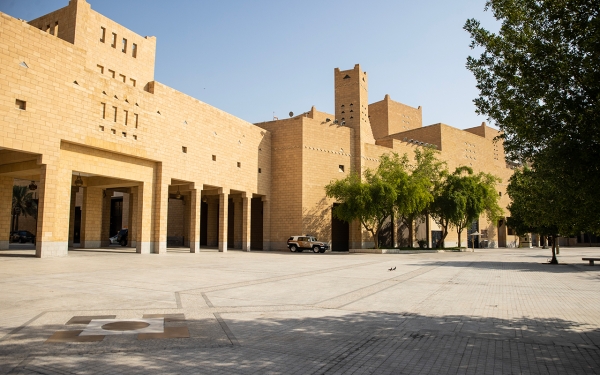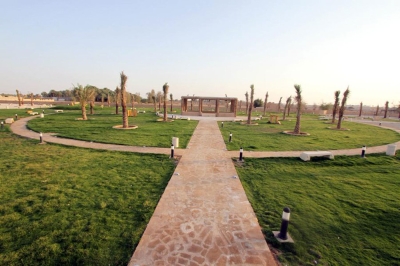
Al-Hukm Palace is a historical and political landmark, and one of the most important tourist destinations and event venues in the capital of the Kingdom of Saudi Arabia, Riyadh. It occupies an area of 11,500 m in Qasr Al-Hukm District, located in the capital's center. Al-Hukm Palace was known as the seat of the imams (rulers) of the Second Saudi State, starting with Imam Turki Bin Abdullah Al Saud and ending with the Founding King Abdulaziz Bin Abdulrahman Al Saud.
King Abdulaziz spent more than thirty years in Al-Hukm Palace before moving to Al Murabba Palace in 1938, following decades during which the palace served as a residence for the imams and kings of the Saudi State.
Al-Hukm Palace is known for its great view of Riyadh's ancient city. Despite its association with the Saudi State, its first foundations were laid in 1747, about seventy-nine years prior to the selection of Riyadh as the capital of the Second Saudi State in 1824.
The palace was built to further fortify Riyadh during the First Saudi State annexation campaigns. Under the Second Saudi State, when Imam Turki Bin Abdullah took over, he designated Riyadh as the capital, and rebuilt the palace to be his place of residence and seat of government to conduct the state's affairs.
During Imam Faisal Bin Turki's reign, Al-Hukm Palace was further expanded and fortified. A passageway was built connecting the palace with Imam Turki Bin Abdullah Mosque. It was used as a residence for the imams of the Second Saudi State and a spot for delegation reception, and contained a guest house. The palace remained the seat of government until the reign of King Abdulaziz Bin Abdulrahman Al Saud, and was considered the largest construction in Riyadh during his reign.
King Abdulaziz also rebuilt the palace in 1911 for the second time. Its construction relied on the materials of adobe and clay, and reflected the nature of Najdi architecture with its geometric decorations. Walls, suites, and three bridges were also added to the palace to connect it to Imam Turki Mosque, the northern part of the palace, family homes, and Imam Abdulrahman Bin Faisal Palace.
Electricity was installed in Al-Hukm Palace in 1931. In 1988, the palace underwent development and restoration by the Royal Commission for Riyadh City, thus adding six floors on its southern side, four towers on all sides, and an additional one in the middle. Moreover, the northern side contains five floors. The palace has two main entrances. The external royal entrance overlooks Al-Safat Square, and leads to an open lobby with three wide corridors. Furthermore, a horizontal path leads to the first floor, and a vertical one to the upper floors.
Sections of Al-Hukm Palace
The first floor of the palace includes the King's office, an affiliated majlis, the Governor of Riyadh's office and a dedicated suite, and the Deputy Governor's office with two private suites. The palace also contains a two thousand m² royal majlis which is also fourteen m in height, with marble columns. The walls are decorated with traditional motifs. Moreover, the palace has a main dining hall with an area of 1,120 m. The upper floors of the palace contain administrative offices and halls for meetings and lectures.
Related quizzes
Related articles

